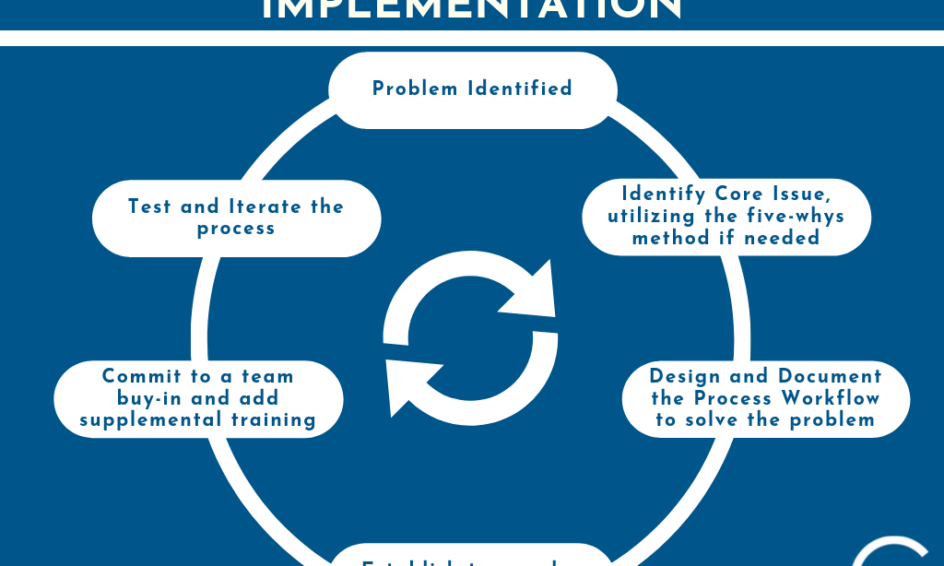In Part 1 of our 4-part series: Building Scalable Financial Operations, we highlighted the importance of building a finance and accounting technological ecosystem and showcased several of our software tools. If you haven’t been able to check it out, we encourage you to give it a read!
This week, we are going over the importance of process workflows and how to properly implement workflows
Importance of Process Workflows
In its most simplistic form, a process workflow is a method to efficiently map out the work of your team, exhibited as a series of steps that need to be completed in a specific order. Visually, a workflow can be mapped out in a diagram or checklist. It seems pretty straightforward, right? However, the reality is that most businesses operate without detailed workflows that are documented, tested, and improved upon over time.
In addition to streamlining work, reducing errors, and increasing productivity, mapping out your accounting workflows result in a clear, high-level financial view of your business. Whether you are a technology company, a service provider, or selling consumer-packaged goods, efficiency is paramount to maximizing profitability. Mapping out the steps of your processes for your team can help them understand, assess, and improve the processes – creating a deliverable roadmap that shows the most efficient route from start to finish. Most importantly, a standardized process creates clear expectations for your employees and allows your team to quickly identify and address core issues when mistakes or breakdowns in the process inevitably happen.
A superb process workflow identifies and eliminates unnecessary tasks, freeing up your team to accomplish more, and create value for your business. Time is spent doing work instead of wasting time figuring out how to do it. Also, by creating good process workflows, you’ve indirectly created excellent training material for new employee onboarding!
Process Workflow Implementation

There is no cookie-cutter model for implementing a good workflow since the process is uniquely tailored to the needs of your specific company, industry, or team. Process development is iterative, evolving through trial and error. Always test the process, evaluate the result at the end, make necessary changes, and repeat.
We encourage a 4-step plan to ensure that every detail is met to ease the implementation.
- At Compass East, we start by identifying the problem. Once you’ve identified a problem you want to solve, make an effort to focus on whether or not that problem is the root cause or a symptom of a deeper issue. One great exercise to help identify root issues are The Five Whys, developed by Sakichi Toyoda.
The founder of Toyota Industries, Toyoda implemented a system of asking “why” five times when talking about a problem. This exercise helps focus in on core, underlying problems rather than addressing symptoms of a deeper issue. The Five Why’s problem-solving model is based on a comprehensive understanding of what’s occurring in the day to day operations of the business. This means that you need to incorporate the members of the team directly involved with the process you’re addressing. In some cases, it is an issue of communication, poor documentation, unclear responsibilities, or a lack of data/insight at various stages of the process.
————– - Next, your client team should evaluate the core issue and document an initial process to address the problem. As we explained above, this is a step by step process to address the underlying problem. By documenting each step, management and your team are held accountable. Documentation allows you to test, measure, and iterate on the workflow. Once you’ve gotten into a rhythm and proven the new process is working, the next step is mapping out the new workflow and training your team on it.
———— - Buy-in from your team is critical to the successful implementation of a new process. Changes can bring pushback or frustration, so provide your team a bigger picture understanding of the “why” this process is changing and what success looks like. It’s also easy for management to implement a new process and not follow it themselves. Expectations for your team have to be the same as management. The quickest way for internal processes to fall apart is a “do what I say, not as I do approach”. Finally, supplement process training with video, FAQ’s, or supporting material when there are additional questions. Ultimately, this will become your training guide for future employees.
———- - After a new workflow has been implemented, documenting and measuring is paramount to ensure that the issue has been addressed and you are constantly looking for ways to continue to improve. Over time, pick key metrics that can test your process. Back it up with data and time-tracking so you can validate the new process is working, which ultimately should prove your team’s lives are being made easier!
Things to Remember
Above all, the most important factor in implementing a process workflow is documentation. When your process is written down, it makes sure your team is aligned, knows their role, and allows you to test, iterate and improve. Process workflows are critically important for finance and accounting work, but this same workflow process can be utilized in every aspect of your business.
